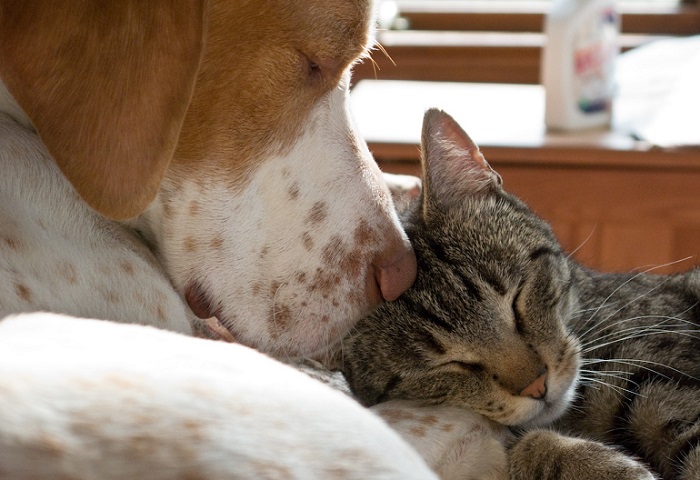Nothing is more endearing and challenging for pet owners than seeing cats and dogs become friends.
There’s a myth that canines and felines are natural enemies. Yet when their friendship works, it’s a rewarding relationship. Much depends on the canines and feline’s character and life experience.
As referees, it’s our job to make the introduction between a kitten and a puppy of any age an enjoyable encounter. It’s not a process you rush.
Allowing their relationship to grow slowly helps your dog and cat form a lasting bond. It’s a process that takes days or even months. Providing newly adopted pets access sanctuary in your house is vital.
Here are a few strategies to introduce pets and make everyone happy.
Body Language of Dogs and Cats
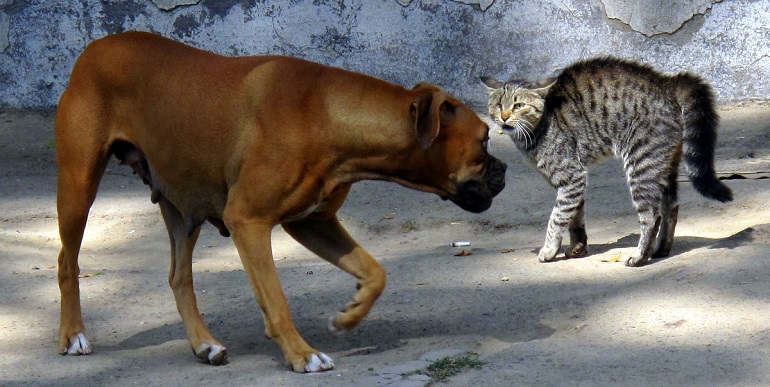
Animals have a unique way of communicating with body language and sounds. Its success depends on a person interpreting those signals when they make an introduction.
Signals to look for in felines if they feel threatened by a dog’s interaction example:
- Flattened ears
- Swishing tail
- Arched spine and erect tail
- Elongated and stiff front legs to make themselves appear larger
- Fully dilated eyes
- Open mouth and hissing
Signals to look for in a pup in a cat’s presence and introductions examples:
- Engages in a predatory and chase-ready stance
- Intensely focused
- Lunging and straining on a lead
- Aggression, chasing or whining
- Baring teeth
Everyone’s pet may add their signature to this type of communication. If your pet exhibits these signals, proceed with caution. Additionally, a resident dog or shy cat might be okay with the animal trespassing outdoors without showing any interactions.
Remember their sanctuary. Ensure they have access to water and food, a litter box, comfort, and security.
The Introduction Process
For many animals, liking can be instant. Others need time to build trust. As the referee, it’s our role to invest the time. Providing your pet with its safe zone helps them overcome their initial animosity in each other’s presence.
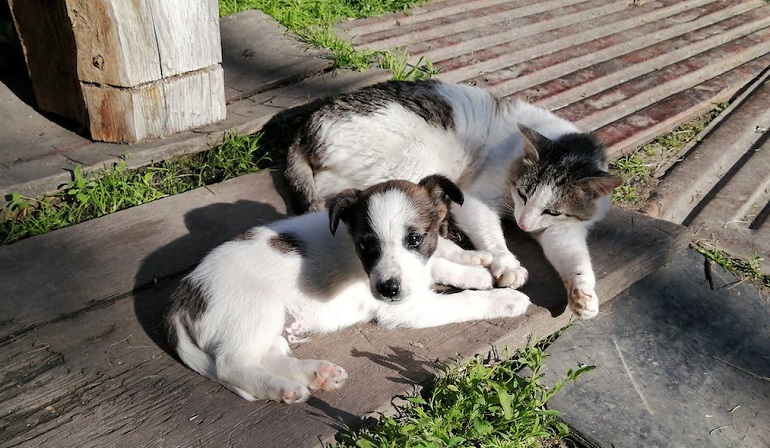
Choose the Proper Location at First: If you’re bringing a dog or puppy home, the meeting should occur in your home to meet your resident cat. Some people mistakenly believe introducing a new pet at the shelter or breeders is a good idea. Cats disagree with that logic.
The same is true for introducing the other pet, your new cat, to the resident dog. The meeting should happen at home to prevent a traumatic experience. Shelter animals are already under immense stress. Further, many dogs may be okay with cats in the shelter and then show signs of aggression when the cat enters its house territory.
A great way of introducing dogs to a shy cat is to ask the shelter or friends with confident dog-experienced cats to test the water. Confident felines help calm canines.
If borrowing a confident cat isn’t possible, you can still master the introduction in a controlled environment. Here’s the good news: by following these helpful tips, you can be a catalyst in starting a beautiful friendship.
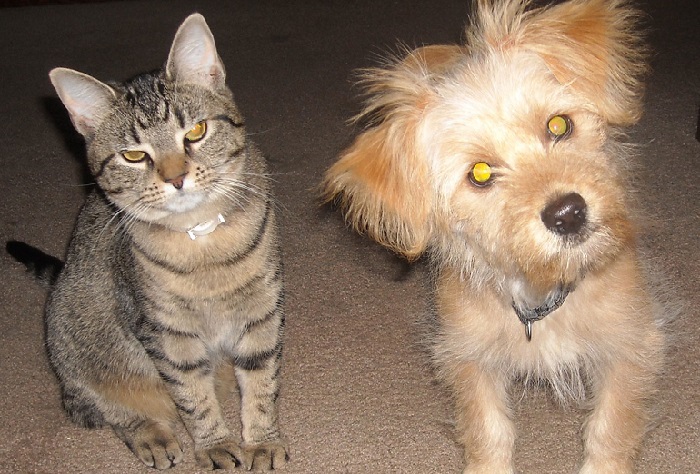
Keep the Pets Separate at First: Animals have super keen intelligence. You can’t fake sneaking in new puppies without noticing. When you bring a new feline or K-9 home, separate them for three to four days to prevent them from getting hurt.
Sanctuary space, separated by a closed door, or baby gate, needs these:
- Access to food and water
- Shelter bed, kennel, cat tree, litter box
- Creature comforts like toys and your attention
Animals rely on their superior scent and prey drive to survive. Having another pet in the same room, without personal contact, allows them to get used to each other’s scent. Confine them to their designated space. Refrain from forcing the new pet introduction too quickly.
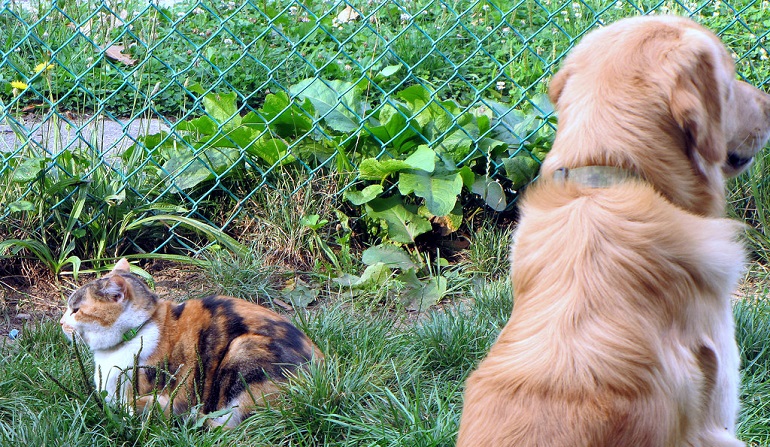
Feed Them on Opposite Sides of a Closed Door: Although felines and canines have different dietary needs, they compete for food by instinct.
You’re training them association by feeding your old and new pets separately on opposite sides of the closed door. This positive association without competitive motivation triggers a pleasant association.
Gradually move the food bowls closer toward the still-closed doors or baby gates. They’ll be able to hear and smell each other eat with the door closed. Once they can eat calmly next to each other without feeling threatened, you can move on to the next phase.
Tip: Remember, animals are keen observers. Your behavior contributes to their reaction. Remaining calm is an excellent way for the introduction to run smoothly. Don’t indulge the current pet or new kitty, as it may negatively affect their sense of security.
Allow Unsupervised Instructions: As pets gain confidence in each other, allow them the freedom to explore the house. However, keeping the lead on the dog or puppy and dragging it on the floor is a good idea. This leasing method is a quick way for you to intervene and prevent your dog from chasing the cat, even for fun.
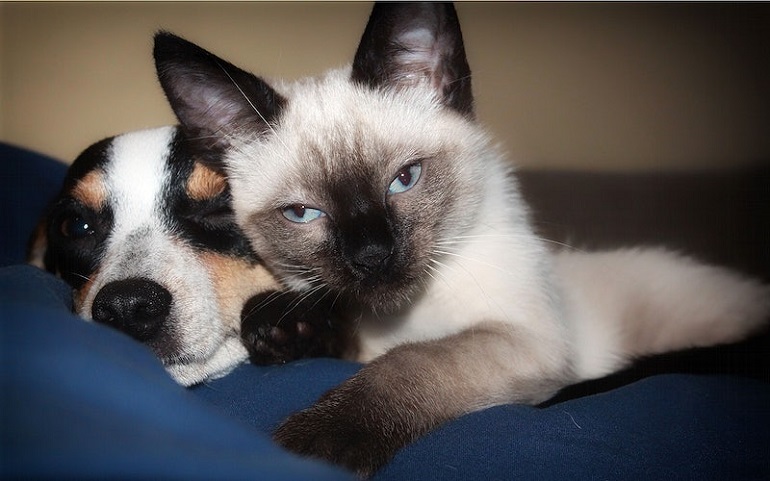
Remember, a firm, calm tone in your commands and all the patience shows more self-control. Keep the sessions short and return each pet to its sanctuary.
Begin Face-to-Face Meetings: This is the moment you’ve been waiting for and maybe dreading. Remember that animals sense our emotions. That’s what makes them so wonderful. Use calm behavior without anticipation and nervous energy during the face-to-face introduction.
Now that your pets can eat food together harmoniously, it’s time to meet. Choose a room that will become common ground. This should be something separate from the other pet’s personal space.
Restrain your dog on a loose lead and make a few short passes. It’s best to allow the cat to make the initial move. Don’t hold the cat in your arms unless you want claw marks.
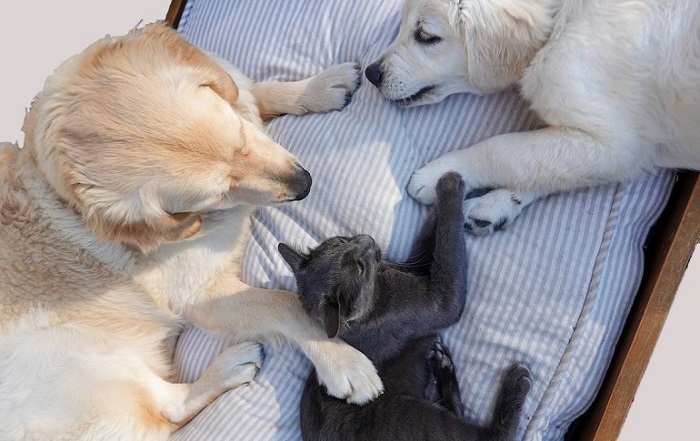
Try this instead:
- Calmly command your dog to sit to prevent a chase
- Offer your dog rewards for a good reaction
- Redirect their behavior if either shows aggression
- If the cat responds positively, reward it
- To divert the cat’s or dog’s attention in a new situation, lure it with a favorite toy
- Command your dog to remain in the sit position
Never force the introduction among other species with fear. Return your pets to their sanctuary space. If the dog and cat aren’t ready, revert to the body language notes. Don’t reward the other pet with a treat for bad behavior.
Repeat Sessions Daily: This moment is a learning experience for everyone. Perhaps you’re confusing your new dog or cat with your nervous tension.
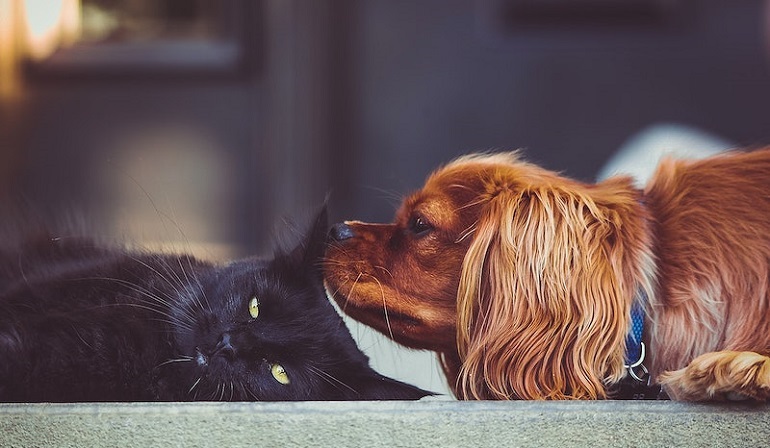
Pick a time each day, and spoil your pets with treats and calm affection during the event. If the cat isn’t interested go slow and allow it to escape to its bedding. If the dog wants to interact, but the cat isn’t ready, don’t force it. Harness the dog from dominating the situation and end the meeting before tensions arise.
Proceed with Caution: You’ll see positive and negative behavior as you keep the sessions short. Even if everyone seems happy for a few days or weeks, monitor the visits.
How to Raise a Dog and a Cat Together
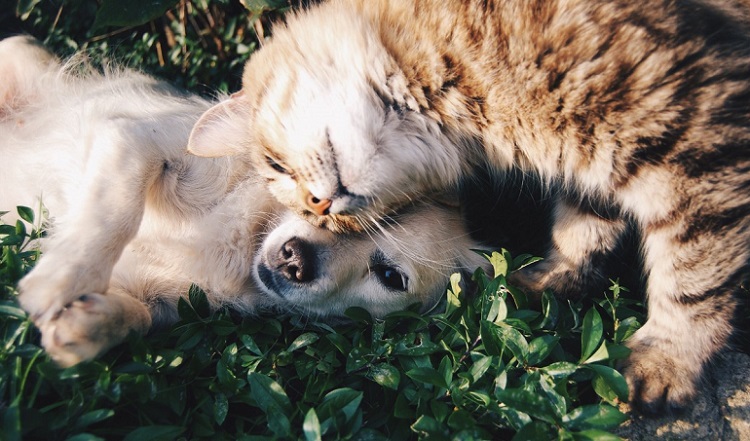
No one said it would be easy, though everyone agrees it’s rewarding. A great way to raise pets together is to start new pet interactions young. If your family needs to introduce a newcomer, have patience and respect for each pet’s needs. Allow their separate space and time.
- Always consider your pet’s personality and try to find a companion with similar needs. Cats with K-9 experience are a great way to go, and vice versa.
- A dog with aggressive lunging and barking behavior toward a cat may not be a great candidate.
- Cats who likewise display animosity toward dogs are perhaps better off with another cat.
- Get a cat or kitten matching the temperament of active dogs with tons of energy. A confident cat makes great friends with a confident dog.
- Aggressive pets can harm each other. Puppies might only play aggressively, but that won’t bode well with senior cats.
- Cats with attitude might tolerate well-behaved dogs but not aggressive interactions.
With time and your training experience, anything is possible. If you want a pet friendship, consider hiring a professional trainer.
Warning Signs
It all comes down to the cat and dog’s body language. Your job is to read the message and act accordingly.
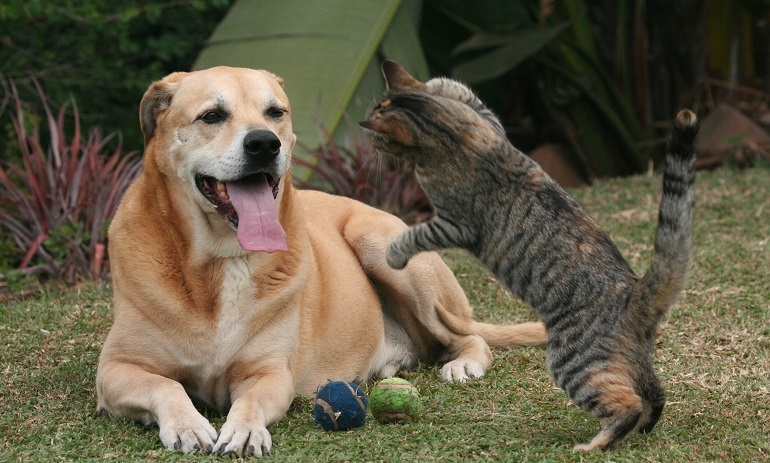
Take action if your dog:
- Focuses intensely on the cat or lunges and fails to follow your commands.
- Choose a different dog for your cat if the dog’s aggressive behavior includes barking, growling, snarling or an active chase.
- If a particular cat hisses, swats, or feels threatened by your dog, find another cat to match your dog.
- Should a dog display tension around several cats, even those with dog experience, your dog is better off without a cat in the home.
- Read the warnings. Unless you have behavioral training experience, don’t force an unsuitable cat to live together with your dog.
- If the cat stops eating, stops defecating in the litter box, shows abnormal behavior, and sleeps in hiding places, the new addition isn’t the right one for your cat.
Conclusion
Felines and canines are natural hunters who rely on smell and instinct. One of the main reasons they don’t see eye to eye is that they communicate differently. This language barrier might result in some unwanted attention or behavior.
Don’t use their sanctuary or restrain them in your arms when you introduce them. The best way to introduce a cat to a dog is over several days or even weeks.
There’s proof that cats and dogs can form a strong bond. Our job as pet owners is to act as interpreters until our pets understand each other. If we succeed in our role of how introducing a cat to our dog, it becomes a smoother experience.


